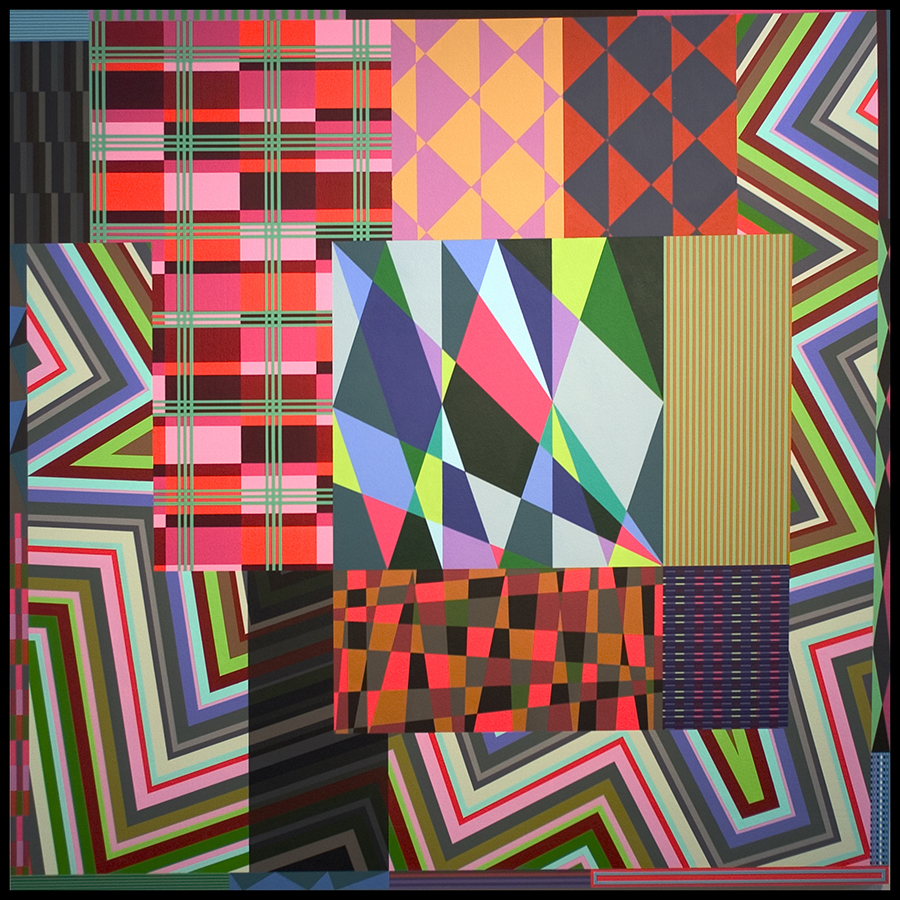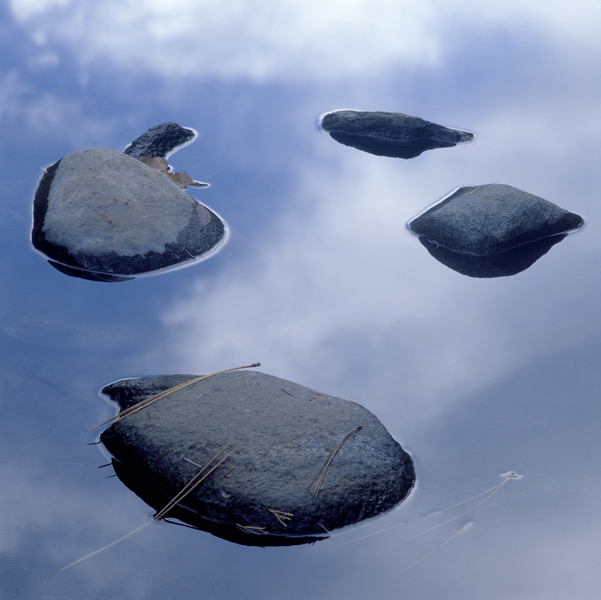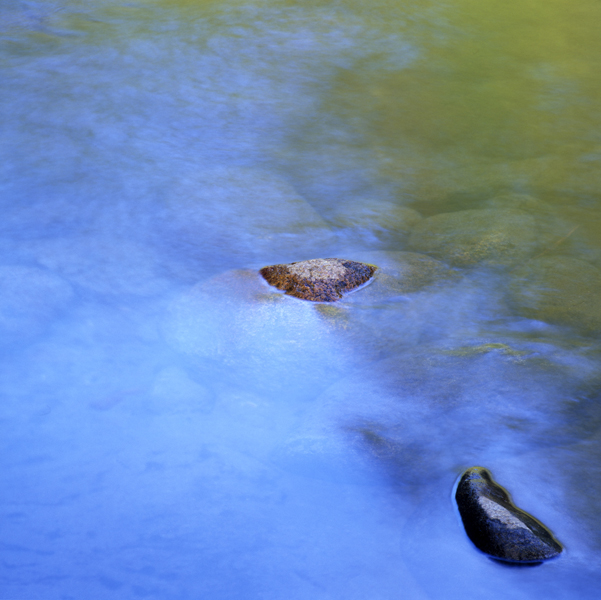 |
If you were a jazz drummer looking for examples of rhythm in visual art, Mark Emerson would be the go-to guy. For most of his 30-year career, Emerson has been creating eye-grabbing paintings built from layers of paint laid down in neatly taped-off lines. While his method is mechanical, the optical effects are polyrhythmic. Arrays of interlocking geometric shapes move in and out of view. Patterns seen on one axis give way to others emerging from deep below the picture plane; and like a kaleidoscope, the paintings seem to generate new forms as long as you care to look.
Emerson’s illusionism isn’t about pictorial space as much as it is about color-induced, geometrically assisted monkey wrenching of the human optic nerve — a practice he’s developed slowly and methodically over years of experimentation. Like the theorist Johannes Itten, who exhaustively cataloged the effects of combined colors, Emerson has built up a large trove of color knowledge which he is now channeling into more shapes than ever before.
 |
Years ago, before his minimalist-influenced style of painting returned to fashion, Emerson claimed, credibly, that his work was all about landscape. And if you stretched you could see the relationship between his forms and the patterns of an agricultural zone viewed from the air. But the one word that Emerson uses over and over again to describe his work is rhythm. There was “Rhythm Method” (1999), “Optimum Rhythm” (at the Crocker Art Museum in 2001) and now “Measuring Rhythm: New Paintings” (2009).
The latter, at JayJay through April 25, expands Emerson’s rhythmic repertoire by turning up the volume of his colors: there are more of them and they feel hotter. Now, instead of moving solely along grid lines as in the past, Emerson’s paintings unfold unpredictably in many directions. Sometimes, as in “Untitled (Triangles)” they move organically, in a circular motion that seems slightly at odds with his preferred square format; while at other times, as in “Wrapping Cloth,” a collection of interlocking squares flanked by lines and grids, the forms vibrate above the surface. Then there is the positively electric “Pussy Wiggle Stomp,” whose ragtime-era title winks at Mondrian’s “Broadway Boogie Woogie”. It’s a sizzling display of urban energy whose sharp-edges and bold lines read like a delirious mash-up of Sol Lewitt, Frank Stella and Keith Haring.
 |
In the show’s one large scale (70” x 70”) painting, Utfart,” Emerson nearly repeats that feat with a similar motif, including swatches of ideas (plaids, decorative motifs, stripes, zig-zags) from previous periods in what feels like something of an opus. Emerson, in his current line of inquiry, is definitely on to something. How big, time will tell.
Philosophers who deal with art often speak about how it operates in this or that “gap.” Walter Benjamin, for example, said that photography operates in the gap between what the lens sees and what the mind records. The British author John Berger, in an essay about Finnish photographer Pentti Sammallahti, wrote of “the half light of glimpses.” Gaps, it seems, are everywhere, just waiting to be discovered.
 |
 |
Locally, Greg Kinder has been minding the gap quite nicely. Kinder trolls the rivers of the
 |
 |
“Surface Leaves,” for example, could be mistaken for an x-ray of a human body were it not for three small leaves set against a ghostly backdrop. “Cloud Rock”, a high-angle shot of a rock poking through a reflection of clouds, toys with our sense of perspective by creating the illusion of an aerial view of an island. “Two Rocks Water Surface” mixes reflected sky with surface colors to mimic paint dissolving in water, a scene reminiscent of Edward Burtynksy’s eerily beautiful shots of polluted landscapes. And although the composition in “Water Cloud Rocks” seems obvious, this picture of four submerged rocks surrounded by reflected clouds still feels like a mystical vision. Photography, says Kinder, "is all “about finding your center.”
Mark Emerson and Greg Kinder through April 25, 2009 @ JAYJAY